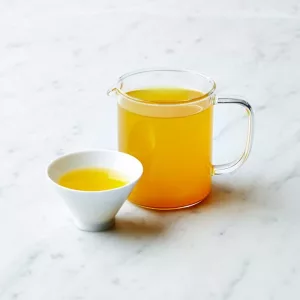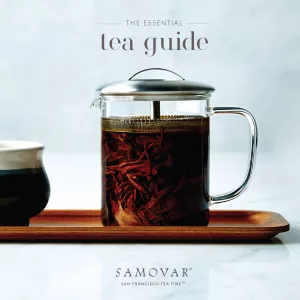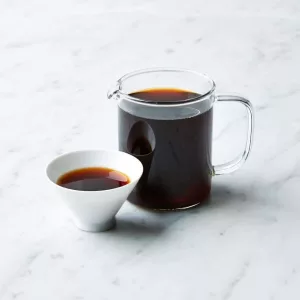Tea is just like life. A rich full life is sensory-infused, one complete with a rich blend of experiences. It is a journey that transports you through things, places, people and feelings and that leaves you with memories and the knowledge that you’ve grown and touched others.
Good tea is a rarity in the world today. Most tea out there is old, flat, dry, and flavor and aroma-less, lacking any spirit or sensuality whatsoever. It’s why most people aren’t excited about tea. Good tea is different. It’s what gets me excited about doing what we do – because good tea is just so… good. In order to know good tea, you don’t need to know a thing. Just drink it and you’ll know. Good tea will take you on a sensual journey: sight, touch, smell, taste, and even feeling. Just drink.
6 Key Components To Tasting Tea
1. Consistency
Look. Open your eyes to the leaves. What do you see? Good tea should have dry leaves that are consistent. Consistency yields a consistent, intentional brew and it all starts with consistent leaves. Consistent leaves should appear similar throughout. Color, size, and shape are the key attributes for assessing a consistent tea. Consistent tea has been intentionally processed in a specific way by a specific artisan to give you something hand crafted and unique. Consistent tea is generally small-batch produced by people who really care.
What do you notice? Green, brown, black, yellow? Curly, straight, short, long, twisted, or rolled? Cut leaves or full? Brittle or spongy? Twiggy or leafy? What do you notice?
2. Brew it
My brewing guideline is to keep it really simple. When tasting tea you want to really understand the breadth of what you have in front of you. Brew it strong to get an idea of it’s potential. 1-2 tablespoons of leaves in about 6 ounces of boiling, filtered water will give you this intensity. Sure you can always brew it lighter later, but for tasting, you want it strong. Decant the infusion, separating the brew from the wet leaves.
3. Infusion Inspection
What do you see in the infusion? Green, red, gold, black, yellow, or purple? Milky or crystalline? Viscous and oily or thin and slippery? What does the body look like? The color? Are there particles or is it entirely clear almost like water? Notice the brewed infusion.
4. Aroma
Inhale deep, deep, deep until your lungs saturate fully warm fragrant aromas. What do you notice? Floral, fruity, grain-like, earthy, sweet, grassy, musty, smoky, nutty, or spicy? What? Where does the aroma take you? It needs to take you away somewhere, or take you back in time to a far away memory. Notice the feeling it creates. What do you smell?
5. Into the mouth
Finally, yes, put the cup to your lips and let the tea meet your taste buds. Close your eyes. What do you notice? What does it feel like in your mouth? On the tip of your tongue? On the inside of your cheeks? In the back of your throat? In your throat?
What does your stomach tell you? Do you get a sensation? Does it remind you of your father mowing the lawn in summer, your grandmother’s attic in the Fall, or your uncle’s smoky barbecue in Spring? Where does the taste take you? What is it you taste initially and does that evolve into something different?
Good tea takes you on a journey. What flavors bloom?Grass, flowers, earth, ocean, sky, minerals, fruits, spices and liquids can be used to understand the flavors of tea. Alfalfa, barnyard, lilacs, seaweed, brine, passionfruit, tar, cream, butterscotch and more are all terms used to describe tea.
Consider your life’s experiences and the flavor of the brew, and where it takes you back in time. What do you taste first? Then what? Then what? What are you still tasting on the back of your tongue long after that first initial sip?
6. Wrap Up
How was it? Shallow and quick or lingering and time-stretching? Let this tea tasting path serve as a training ground, a dojo, for immersing yourself in other areas of life. Fully tasting tea lets us taste the rest of life. Working, playing, talking, loving, reading, and eating all get deeper and richer when we are present to the richness they offer and the senses they trigger. We get more connected. To the activity. To the people. To ourselves. And when that happens things just get more fun.
So let’s start drinking.





